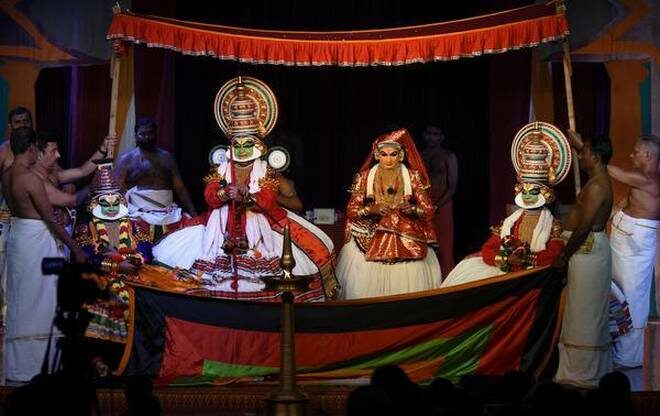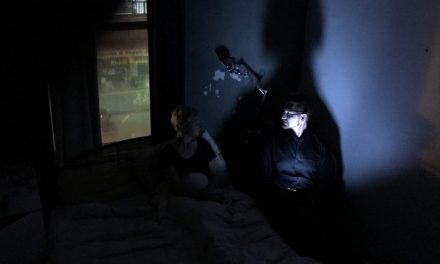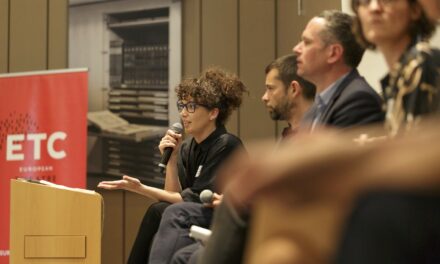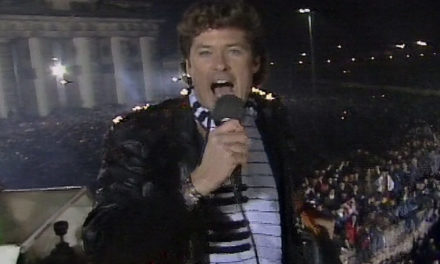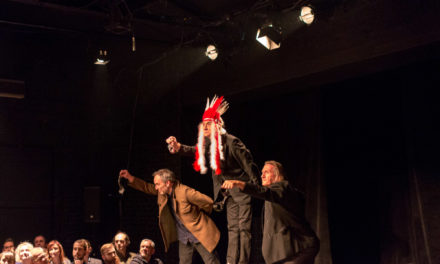Through sensitive expressions and movements, the artistes conveyed the mood.
The beauty of the varied shades of expressive communication was evident in the two Natya Natakams staged as part of the five-day Bhava Bhavanam, Kathakali festival organized by Kalakshetra. A look at two of them — Subhadra Haranam and Rajasppyam (Thekkan) here. The focal point of expression on both days was on the romantic conversation between both the heroes and heroines, but it was the difference in approach that was interesting.
Subhadra Haranam, featuring Kalamandalam Gopi and composed by Mahendranath Namboodiripad tells the story of Krishna inviting Arjuna in the guise of an ascetic, arranging for Arjuna’s marriage with his sister Subadhra while Balarama and his family are away. The couple, engrossed in their romantic moments, hear the sounds of the chariots returning depart for Indraprastha, Arjuna challenging the guards to face him in a battle.
The second day featured Kalamandalam Ravikumar in Rajasooyam (Thekkan). Maharaja Karthika Tirunal Rama Varma was its composer. Yudishtira wants to conduct a Rajasooya Yaga and seeks Krishna’s help even as Jarasandha, Magadha king, is preparing for a sacrifice of hundred kings. He is waiting for the last king. Krishna tells that by conquering Jarasandha, Yudishtira will conquer all. Krishna then comes with Arjuna and Bheema disguised as Brahmin boys and they express their wish after Jarasandha generously agrees to grant their wishes. The boys reveal their identity and challenges the king to a duel. Bheema tears Jarasandha, the invincible, into two parts, throws them in different directions and anoints his son as the crown prince.
The portrayal on the first day gravitated more towards a refined characterization, while the depiction on the second day was rather ordinary with the use of overt gestures in certain places.
Kalamandalam Gopi’s expressions describing Subhadra’s lotus-like eyes, elephant-like gait and other physical attributes were a poetic delight. Subhadra’s (played by Kalamandalam Praveen) reactions in response just with Mukhabinaya were exemplary too. That the artistes managed to sustain the interest of the audience for a long duration with just abhinaya in a static position, spoke of their artistic excellence.
A beautiful canopy provided a celebratory ambiance to the wedding sequence. It was a beautifully orchestrated moment when Arjuna faces Krishna. Gazing at the audience, he slowly turned to look at the faces on the stage. Krishna’s split-second reaction when Arjuna meets his eyes was a gem. The use of classical ragas such as Bilahari and Devagandhari sung brilliantly by Pathiyur Shankarankutty and Kalamandalam Babu Namboodhiri enhanced the visual appeal. The sensitive use of percussion instruments for the chariot scene had a telling effect. Kalamandalam Unnikrishnan and Sadanam Ramakrishnan played the Chenda and Kottakkal Ravi and Sadanam Devadas played the maddalam.
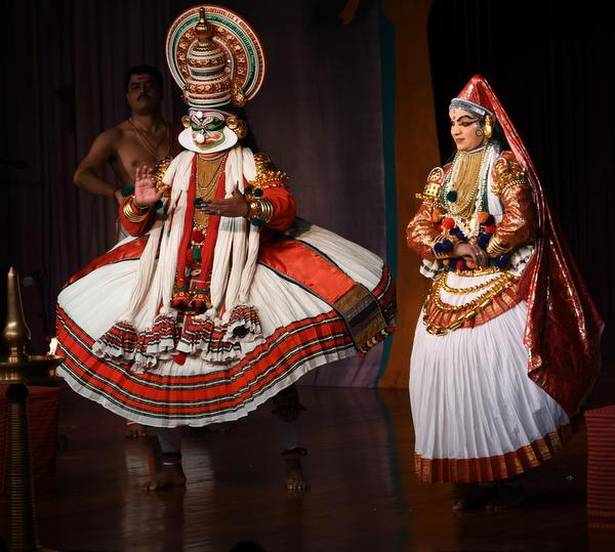
Rajasoorya performed at the Kathakali Festival held in Kalakshetra. Photo Credit: S_R_Raghunathan
The traditional entry — Thirainokku — introduction of a kathi character behind a thirasila was riveting and the power and majesty of the king unfolded in all its grandeur. Attami was deployed in a brilliant manner in the entrance of the couple in their private chamber, the portrayal of emotions, their conversations, and reactions. Kalamandalam Ravikumar stood out in the descriptions of the swan, its gait and conveying the power of a lion by depicting the scared deer. Kalamandalam Anilkumar, playing the female role, was a perfect foil to him. Raga Bageshwari sung by Kalamandalam Vishwas and Kalamandalam Krishnakumar was ideal for communicating the mood of romance.
Kalamandalam Mayyanadu Rajeevan as Krishna, Kalamandalam Prashanth as Bheema and Kalamandalam Anilkumar as Arjuna livened up the proceedings with humour. Kalamandalam Srihari and Kalamandalam Shrivin on the chenda, Kalamandalam Haridas and Kalamandalam Prashanth on the maddalam provided percussive support. Chutti was by Sadanam Srinivasan, Sadanam Vivek and backstage assistance were by Kottakkal Kunjiraman, Sadanam Vivek and Rajan Sreenarayanan.
Kalakshetra has been training students in Kathakali, and these students performed, as a prelude on all days. It was a new experience to watch four dancers moving in unison with perfect co-ordination as they did ‘Purappad.’
It is a matter of time before choreographed group presentations find their way to stage too. Thodayam — an invocation using all the talams in the repertoire was performed impressively by 12 students.
‘Bhava Bhavanam,’ presented in the aesthetic ambiance is something connoisseurs of the art look forward to every year.
This article was originally posted by Thehindu.com and has been reposted with permission.
This post was written by the author in their personal capacity.The opinions expressed in this article are the author’s own and do not reflect the view of The Theatre Times, their staff or collaborators.
This post was written by V.V. Ramani.
The views expressed here belong to the author and do not necessarily reflect our views and opinions.

